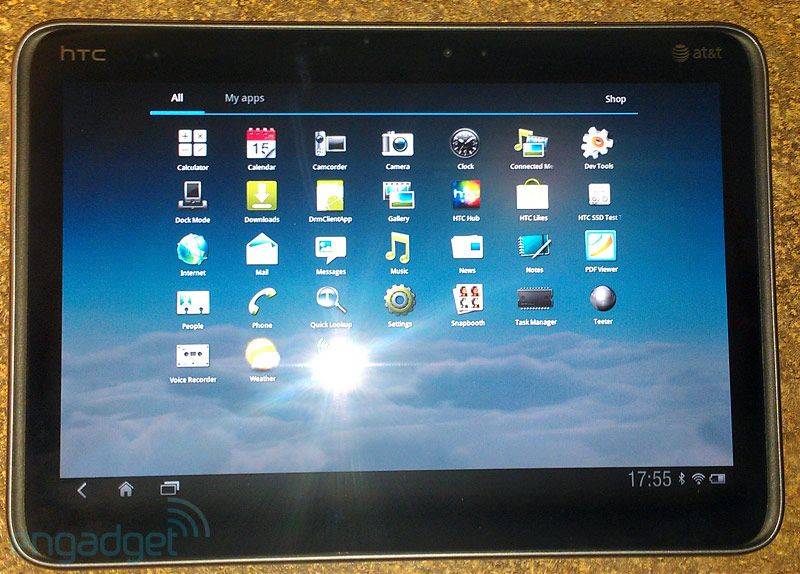With so many manufacturers trying to emulate the iPad's sleek black bezel and paper-thin form factor, it's good to see a tablet that's a little different once in a while. Enter the Packard Bell Liberty Tab, available in cherry-red or brown with a stylish chrome frame and Android 3.0 Honeycomb under the hood.
Anyone familiar with an Android smartphone will start to feel at home with the Liberty Tab very quickly. There are five separate homescreens, all fully customisable with widgets and applications. Swiping between the different homescreens is fast and responsive and a quick tap of the capacitive, multi-touch screen will open applications promptly.
We had no trouble skipping through websites with the Flash-supporting browser and had the BBC homepage open in five seconds.
If you're thinking this tablet looks familiar, it's because it's from the same stable as the Acer Iconia Tab A500 and, like the Iconia, has Nvidia's Tegra 2 processor at its heart. This keeps performance strong and on a par with other Tegra 2 tablets, such as the Motorola Xoom.
In terms of weight, it's a fairly hefty tablet – especially when compared to the light 7-inch Galaxy Tab or the iPad 2. But a little extra girth is always good when it comes to connectivity and the Liberty Tab has an HDMI port for connecting the tablet to a TV as well as USB and micro-USB sockets for peripherals.
Wireless connectivity is the standard fare with 802.11n Wi-Fi and 3G support, as well as Bluetooth 2.1 and GPS built in.
Decent sound
Stereo speakers produce decent sound and are managed by an on-board Dolby chipset. Then there's the standard 3.5mm headphone jack for when you want to keep the music to yourself. A 5-megapixel front-facing camera and 2-megapixel rear-facing camera are both included and, while adequate for taking pictures, you're more likely to use them to video-chat across the web.

We found the battery life to stand up well against other tablets, with the exception of the Asus' Transformer. As long as you restrict yourself to basic tasks like surfing the web or working through emails, you'll get most of a day's work out of the Liberty Tab.
But if you're planning to use it as a gaming machine or to watch HD movies, expect the battery to drain out much faster. We ran a looped standard-definition movie and managed to get 287 minutes out of the battery.
The Packard Bell's 1280 x 800-pixel resolutions means the screen holds up well when watching films or looking at photographs. To get the best results from the screen though, we had to put the brightness right up to the highest level. We did find that the viewing angles were good enough that more than one person could comfortably watch the Liberty Tab's screen.
Overall, the usability and performance of the Liberty Tab is on a par with other Android tablets of the Honeycomb era, but two favourable points make this worth considering. Firstly, the price is reasonable – the Liberty Tab comes in at £100 cheaper than its tablet twin, the Acer Iconia A500.
Secondly, the cherry-red design admittedly looks good and we certainly recommend this colour over the brown option – it's so much more interesting than having just another dark slab lying around the house.
Source : techradar



